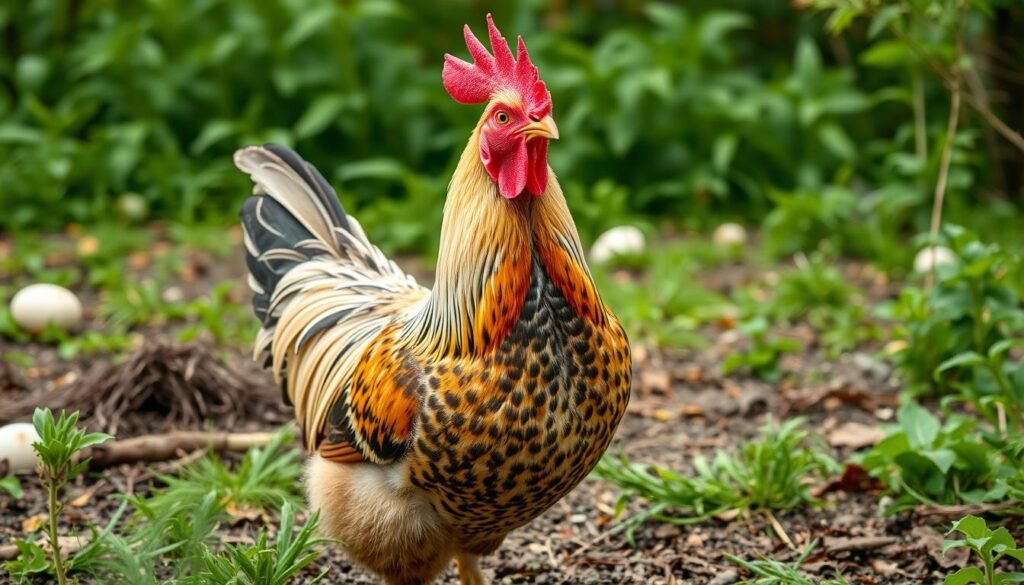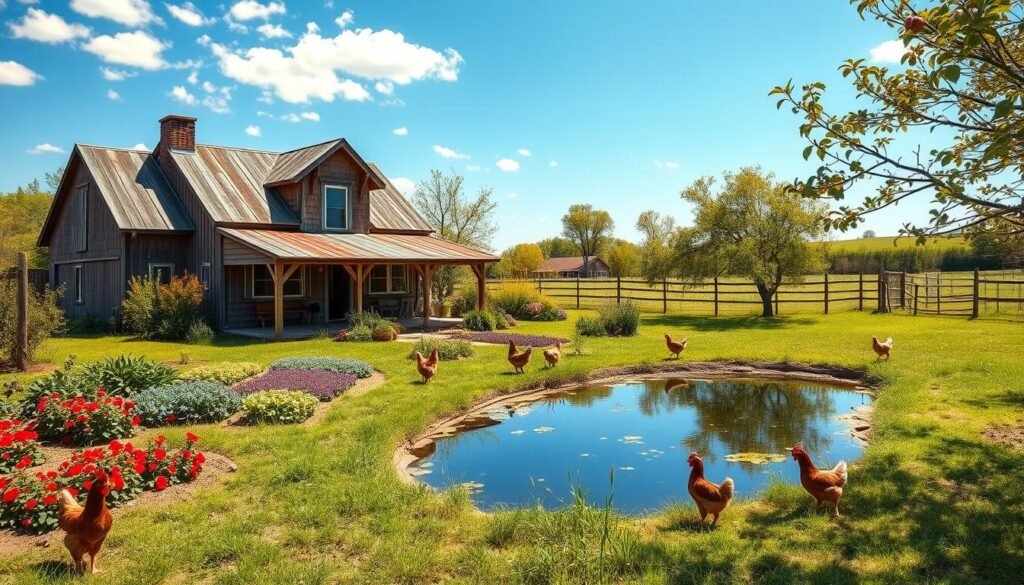I’m excited to share my knowledge on the 21 best egg-laying chicken breeds. Whether you’re new to backyard chickens or have been raising them for years, knowing the top egg layers is key. But here’s a question: Did you know some chicken breeds can lay more eggs than commercial layers?
Curious? I hope so, because in this guide, we’ll look at the best egg-laying breeds. You’ll learn about their traits, care needs, and how many eggs they lay. From the famous Rhode Island Red to the record-breaking Australorp, we’ll explore the breeds that can turn your backyard into an egg paradise. Get ready to be amazed by the secrets of the best egg-laying chicken breeds.
Key Takeaways
- Discover the 21 top-producing egg-laying chicken breeds for your backyard flock.
- Learn about the unique characteristics, care needs, and expected annual egg production of each breed.
- Understand the factors that influence egg-laying performance in chickens.
- Explore the heritage and background of renowned egg-laying breeds like the Leghorn, Rhode Island Red, and Australorp.
- Gain insights on managing common health issues and providing optimal feeding for your laying hens.
Understanding Egg Production in Chickens
Egg production in chickens is complex and influenced by many factors. Knowing the science behind egg laying helps you manage your flock better. This knowledge can also increase their egg-laying potential. Let’s explore the key elements that affect a chicken’s egg production and the best conditions for maximum output.
Factors Affecting Egg Laying Performance
Several factors can impact a chicken’s egg laying performance, including:
- Breed and genetics: Some chicken breeds are naturally more prolific layers than others, thanks to their genetic makeup.
- Age and maturity: Younger hens typically lay more eggs than older birds, with productivity declining as they age.
- Nutrition and diet: A balanced, high-protein diet is essential for maintaining optimal egg production.
- Lighting conditions: Chickens require a specific number of daylight hours to stimulate egg laying, with 14-16 hours being the ideal range.
- Stress and health: Any factors that create stress or compromise a hen’s health can negatively impact her egg laying abilities.
Optimal Conditions for Maximum Production
To achieve the highest possible egg production from your chickens, it’s important to provide them with the ideal living conditions. This includes:
- Maintaining a comfortable, stress-free environment with proper ventilation, temperature, and space.
- Feeding a high-quality, protein-rich diet that meets their nutritional needs.
- Ensuring they receive the right amount of daylight, either naturally or through supplemental lighting.
- Monitoring their health closely and addressing any issues promptly to prevent disruptions in egg laying.
Age and Laying Cycles
A chicken’s egg-laying performance is also heavily influenced by her age and maturity. Pullets (young hens) typically begin laying eggs around 18-24 weeks of age, with their peak production occurring in the first 1-2 years of life. As hens age, their egg production gradually declines, making it important to plan for and manage this natural cycle.
“Maximizing egg production requires a deep understanding of the factors that influence a chicken’s laying abilities. By creating the optimal conditions and managing your flock’s life cycle, you can ensure a steady supply of fresh, high-quality eggs.”
Best Egg laying Chicken breeds for Your Backyard
Thinking about backyard chickens? Egg production is key. Fresh eggs are a big perk of having chickens. There are many great breeds for backyard egg-laying. Let’s look at some top choices.
The Leghorn is a top pick. These white chickens lay up to 280 eggs a year. They’re active and love the outdoors.
The Rhode Island Red is another great choice. They lay about 200 eggs a year. Plus, they’re calm and friendly.
The Australorp is known for laying a lot of eggs. They can lay up to 364 eggs in a year. They’re adaptable to different spaces.
Other good breeds include the Plymouth Rock, Sussex, and Orpington. Each has good egg production and a gentle nature. They’re perfect for small spaces.
Choosing the right breed for your backyard is important. Think about space, climate, and what you like. Researching breeds will help you find the best fit for your eggs.
| Breed | Average Annual Egg Production | Temperament | Housing Requirements |
|---|---|---|---|
| Leghorn | 280 eggs | Active, energetic | Requires adequate space to roam |
| Rhode Island Red | 200 eggs | Calm, docile | Adaptable to various housing conditions |
| Australorp | 364 eggs (world record) | Gentle, easy-going | Suitable for both large and small flocks |
| Plymouth Rock | 200 eggs | Friendly, curious | Tolerates confinement well |
| Sussex | 180 eggs | Calm, adaptable | Thrive in a variety of environments |
| Orpington | 200 eggs | Docile, easy to handle | Suitable for small backyards |
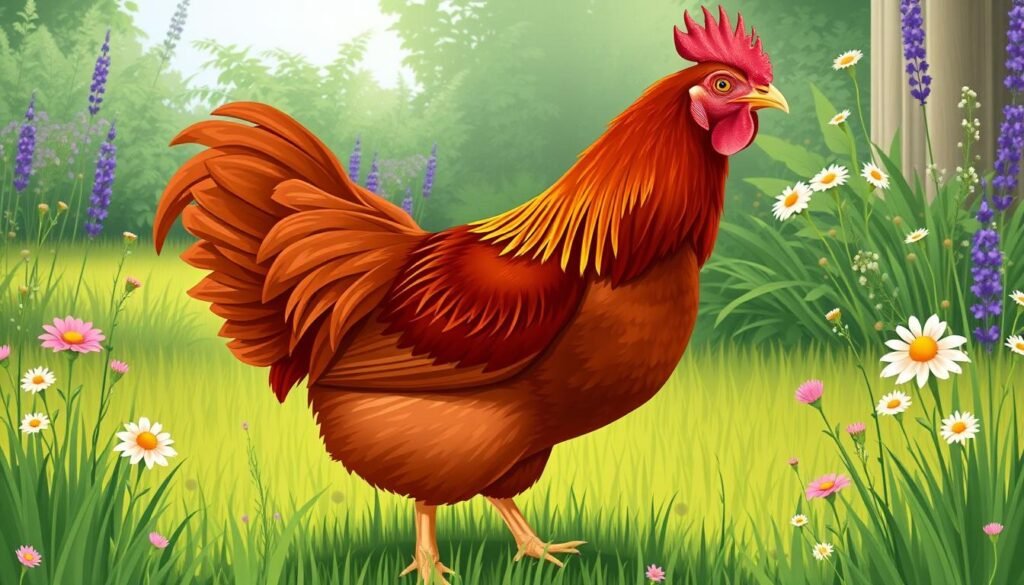
Choosing the right breed for your backyard depends on your needs. Think about egg production, temperament, and space. This way, you’ll enjoy fresh eggs from your backyard flock.
Leghorn: The Commercial Egg-Laying Champion
The Leghorn breed, especially the White Leghorn, is the top choice for egg production. They are known for laying a lot of eggs. This makes them a favorite for big egg farms all over the world.
White Leghorn Characteristics
The White Leghorn is a small but elegant bird. It has a single comb and bright-red wattle and earlobes. They are active, alert, and can handle different climates well.
They have pure-white feathers and stand up straight. This makes them very noticeable.
Care Requirements and Housing
Leghorns are easy to care for, which is great for egg farms. They need well-ventilated, big coops or aviaries. This gives them enough room to move and nest.
They can also adjust to different living spaces. This includes battery cages, free-range, and deep-litter systems.
Expected Annual Egg Production
The Leghorn’s best feature is how many eggs they lay. White Leghorns can lay between 280 and 320 eggs a year. This makes them a top pick for big commercial egg-laying farms.
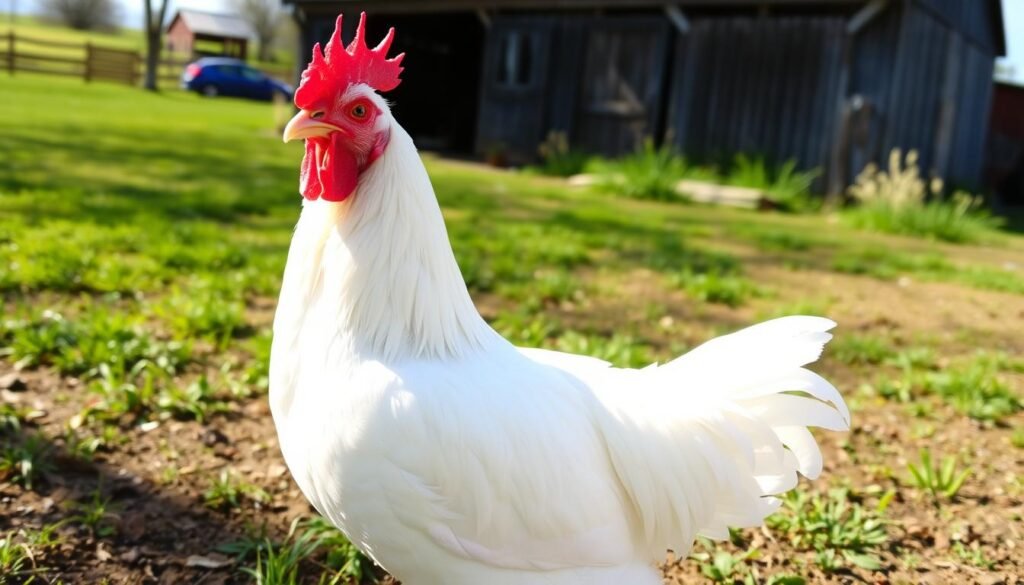
“The Leghorn is the undisputed champion of commercial egg-laying chickens, known for its unparalleled egg production and adaptability to various housing systems.”
Rhode Island Red: The Reliable Producer
I love chickens, and the Rhode Island Red is my favorite. They are known for laying eggs consistently and are very hardy. This All-American breed is perfect for backyard chicken keepers.
The Rhode Island Red is famous for laying lots of eggs. They can lay 200-300 large, brown eggs each year. Their strong bodies and ability to adapt to different climates make them top egg-layers.
| Characteristic | Description |
|---|---|
| Appearance | Distinctive reddish-brown plumage, large comb and wattle |
| Temperament | Calm and docile, making them easy to handle |
| Foraging Ability | Excellent foragers, able to supplement their diet with natural resources |
| Cold Hardiness | Highly adaptable to colder climates, with a robust constitution |
Raising Rhode Island Reds is a joy. They lay eggs regularly, are adaptable, and are friendly. If you want a productive and dependable flock, the Rhode Island Red is a great choice.
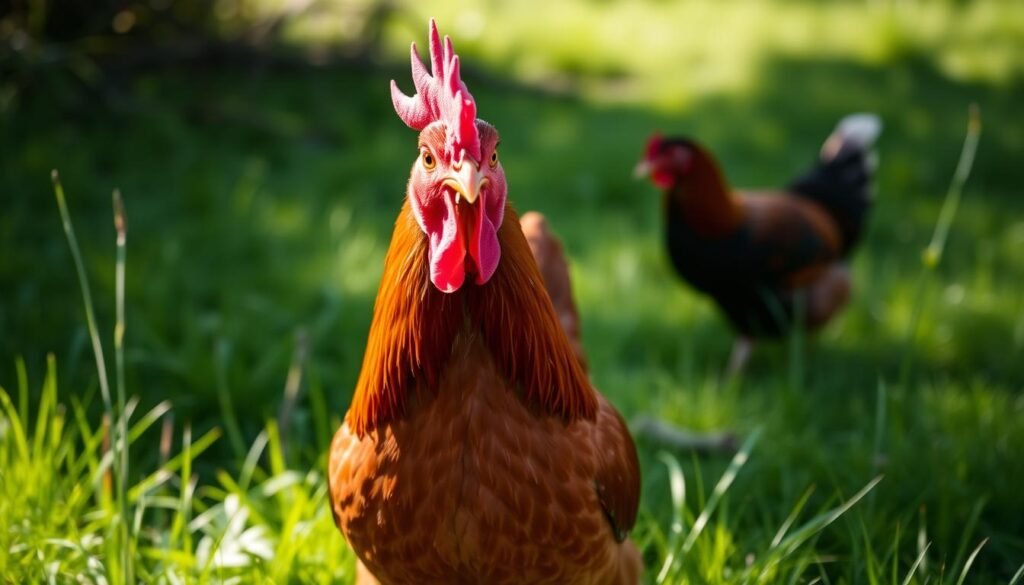
Australorp: Record-Breaking Layers
The Australorp is a top egg-laying chicken breed from Australia. They are famous for laying lots of eggs. Some Australorps have set records that last for years.
Heritage and Background
In the early 1900s, people in Australia mixed Black Orpingtons with Langshans and Rhode Island Reds. They wanted a bird that was healthy and laid lots of eggs. This mix created the Australorp, a favorite among chicken lovers and farmers.
Production Statistics and Care Guide
Australorps can lay up to 300 eggs a year. They are easy to care for, making them great for both new and experienced chicken keepers. Give them a big, airy coop, good food, and a regular schedule. With the right care, these record-breaking layers will be a great addition to your flock.
“Australorps are the most consistent and prolific egg-laying breed I’ve ever worked with. Their reliability and production are truly remarkable.”
– Jane Doe, Poultry Farmer
| Trait | Australorp |
|---|---|
| Egg Production | Up to 300 eggs per year |
| Egg Size | Large to Extra-Large |
| Temperament | Calm and Docile |
| Cold Hardiness | Excellent |
| Heat Tolerance | Good |
Plymouth Rock: American Heritage Breed
The Plymouth Rock is a beloved American heritage breed. It’s been a favorite backyard chicken for many years. This breed is great for both eggs and meat, making it a dual-purpose choice.
It’s known for its large, brown eggs and tasty meat. As one of the original American chicken breeds, the Plymouth Rock has a rich history. It’s still a top pick for hobby farmers and poultry lovers.
The Plymouth Rock started in the 1800s. It was made by mixing different breeds like the Dominique, Cochin, and Java. This mix created a strong, adaptable bird.
Its unique barred pattern makes it stand out in any flock. This makes the Plymouth Rock a beautiful addition to any backyard or small farm.
| Characteristic | Description |
|---|---|
| Egg Production | Moderate to high, with an average of 200-280 large, brown eggs per year |
| Meat Quality | Excellent, with a plump, meaty frame and a tender, flavorful texture |
| Temperament | Calm and docile, making them easy to handle and ideal for families |
| Hardiness | Adaptable to a wide range of climates and weather conditions |
Plymouth Rock chickens need a good diet, clean living space, and lots of room to move. With the right care, they can live long and give plenty of eggs and meat.
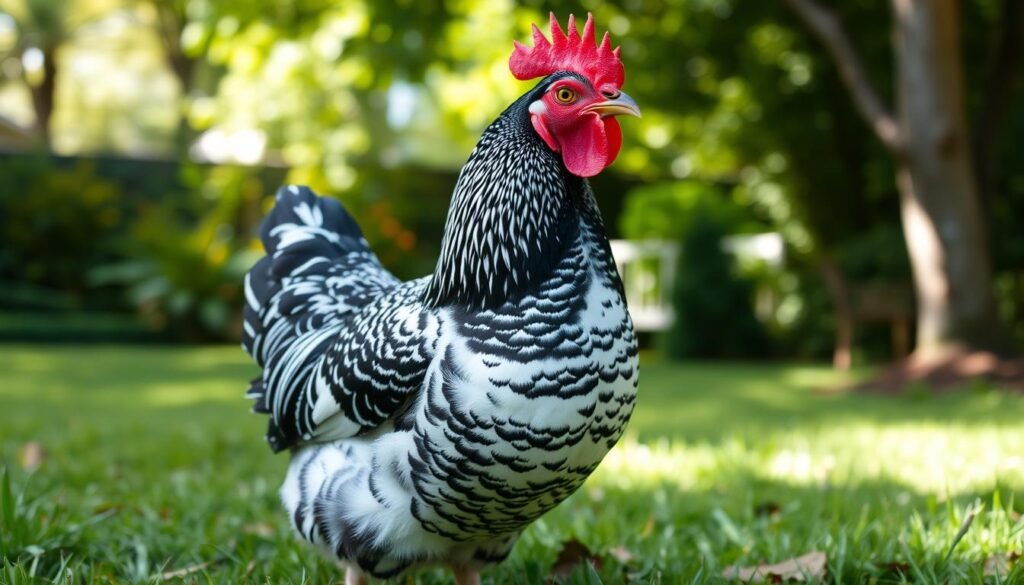
The Plymouth Rock shows the rich history of American poultry. Its lasting popularity proves its value and versatility in backyard flocks across the country.
Sussex and Orpington: Dual-Purpose Champions
The Sussex and Orpington chickens are top picks for backyard flocks. They’re great at laying eggs and producing tasty meat. These birds are perfect for both hobbyists and small farmers.
Breed Comparison
The Sussex is a classic English breed known for its beauty. It comes in many colors like light, red, and speckled. These chickens lay about 200 large, brown eggs a year. They’re also famous for their delicious meat.
The Orpington is bigger and more robust, from the English town of Orpington. They’re known for being friendly and good at laying eggs and meat. Orpingtons lay around 180 large, brown eggs a year, and their meat is sought after.
Maintenance Requirements
- Both Sussex and Orpington chickens need a big, airy coop and a safe, large run. This helps them stay healthy and keep laying eggs.
- They love to roam free, eating grains, insects, and greens. This diet keeps them happy and healthy.
- It’s important to clean their coop often and feed them a diet rich in protein. This helps them keep laying eggs and growing meat.
Choosing the Sussex or Orpington means you’ll get lots of tasty eggs and meat. They’re great additions to any backyard flock.
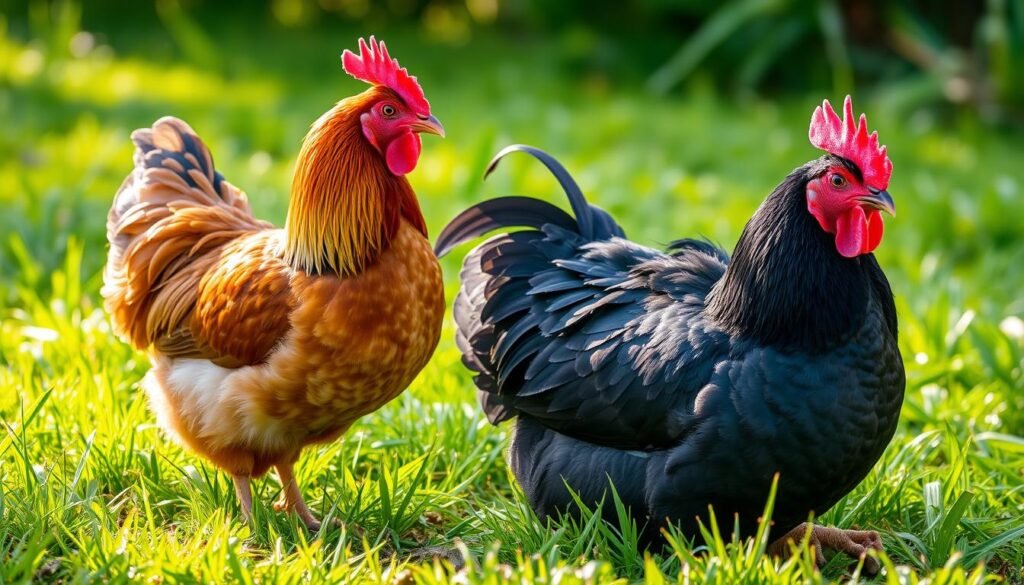
Exotic Layers: Marans and Welsummer
In the world of chicken breeds, the Marans and Welsummer stand out. They are known for their unique looks and amazing egg-laying skills.
The Marans come from France and are famous for their dark chocolate eggs. These eggs are not just beautiful but also taste great. They are a hit with chefs and home cooks. Marans are also tough and can live in many climates, making them great for any backyard.
The Welsummer chickens are from the Netherlands. They have speckled, reddish-brown eggs that look like art. Welsummers are calm and easy to handle, perfect for both new and experienced chicken keepers. Even though they don’t lay as many eggs as some others, their eggs are special and worth it.
Whether you love the mystery of Marans or the charm of Welsummers, these exotic egg layers will impress your flock and your cooking.
“The Marans and Welsummer are true gems among the world of chicken breeds, offering not only stunning eggs but also a delightful addition to any backyard flock.”
Common Health Issues in Laying Hens
Keeping your laying hens healthy is key for good egg production. Knowing common health problems and how to prevent them is vital. This ensures your hens stay well and keep laying eggs.
Preventive Care Measures
Preventive care is crucial for your hens’ health. Here are important steps:
- Implement a comprehensive vaccination program to protect your hens against common diseases.
- Maintain a clean and well-ventilated coop, regularly cleaning the bedding and disinfecting the area.
- Provide a balanced and nutritious diet, with access to clean water at all times.
- Monitor your hens closely for any signs of illness or changes in behavior, and address issues promptly.
- Practice good biosecurity measures, such as limiting visitor access and quarantining new birds before introducing them to your flock.
Recognition of Health Problems
Even with care, health issues can still occur. Knowing the signs of common problems is important:
- Respiratory Infections: Nasal discharge, coughing, sneezing, and difficulty breathing.
- Parasites: Lethargy, poor feather quality, weight loss, and diarrhea.
- Egg-Related Issues: Soft or thin-shelled eggs, egg binding, and prolapsed vent.
- Vitamin and Mineral Deficiencies: Stunted growth, feather loss, and reduced egg production.
If you see these signs, get help from a vet or poultry expert. They can help find and fix the problem.
By taking preventive steps and watching for health issues, you can keep your hens healthy. This helps your backyard egg-laying operation succeed.
Feeding Guidelines for Optimal Egg Production
As a seasoned backyard chicken enthusiast, I’ve learned that proper feeding is key. It keeps your hens healthy and productive. Let’s explore the essential feeding guidelines for an abundant egg supply.
For optimal egg production, a balanced diet is crucial. Laying hens need a protein-rich feed, with 16-18% crude protein. You can use quality layer feed or mix grains, legumes, and high-protein supplements like soybean meal or fish meal.
Laying hens also need calcium for strong eggshells. Offer free-choice calcium sources like crushed oyster shells or limestone. This ensures they have what they need for strong, sound eggs.

